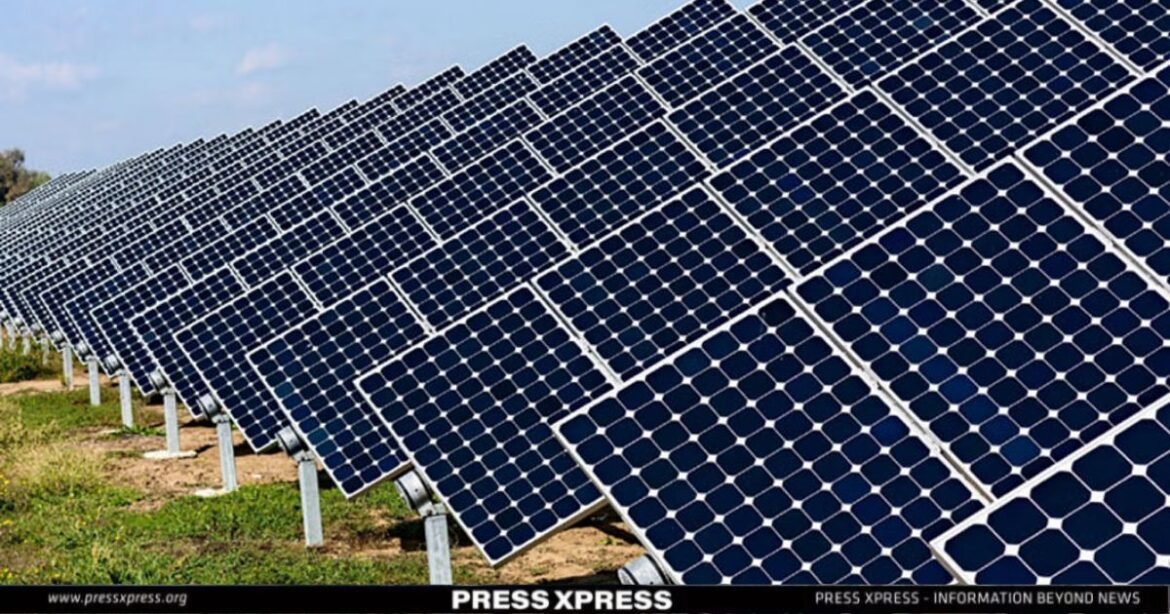A recent study from the Institute for Energy Economics and Financial Analysis (IEEFA) indicates that deploying a strong 2,000-megawatt rooftop solar capacity in Bangladesh could yield significant yearly savings, estimated between $476 million and an impressive $1 billion. This solar initiative not only offers substantial economic benefits but also showcases the untapped potential of sustainable energy.
You can also read: Radiant Future: Chinese Consortium Granted Green Light for 100MW Solar Plant
The study highlights the glaring economic advantages of rooftop solar, yet it solemnly notes the sluggish pace of progress in the sector. A curtain of challenges, including a lack of awareness, low confidence, perceived risks, high import duties, and constricted fiscal conditions, shadows the path forward.
Unpacking the Financial Benefits of Rooftop Solar
Currently, the rooftop solar landscape boasts a modest 160.63 megawatts of installed capacity. The study meticulously calculates the levelized cost of energy (LCOE) for 1 megawatt of rooftop solar sans battery storage, estimating it at Tk 5 ($0.046) per kilowatt-hour (kWh). In comparison, prevailing electricity tariffs for industrial and commercial buildings stand at Tk 9.9 ($0.09) and Tk 10.55 ($0.096) per kWh, respectively.
The analysts at IEEFA factor in tariffs of Tk 18.68 per kWh for furnace oil-based plants and Tk 39.4 for diesel-fired units. The outcome consists a potential annual windfall of $476 million for the former and a monumental $1 billion for the latter, as elucidated by Shafiqul Alam, the lead analyst of the study.
Potential Windfall:
- Tariffs of Tk 18.68 per kWh for furnace oil-based plants.
- Tariffs of Tk 39.4 for diesel-fired units.
- Potential annual savings: $476 million and $1 billion, respectively.
Assuming a conservative scenario of a rooftop solar system operating for a minimum of four hours daily, the study underscores the potential relief it can provide to the national grid during peak demand. Bangladesh, having weathered over 1,000 megawatts of daily peak load-shedding for eight of the past 15 months (from August 2022 to October 2023), could have significantly mitigated this energy crisis with a robust 2,000-megawatt rooftop solar capacity.
The implications extend beyond mere relief to the national grid. The report envisions a substantial contribution to the economy—bolstering industrial production, reducing reliance on fossil fuel imports, and alleviating pressure on foreign currency reserves.
Relief to National Grid:
- Conservative scenario with rooftop solar operating four hours daily.
- Mitigation of energy crisis during peak demand.
- Overcoming 1,000MW daily peak load-shedding.
Overcoming History’s Shadow to Unlock Potential
In the study, the Institute for Energy Economics and Financial Analysis (IEEFA), headquartered in Ohio, sheds light on the challenges impeding the growth of rooftop solar in Bangladesh. A history of low-quality installations during new grid connections has cast a shadow on building owners’ confidence, keeping the sector in its infancy.
Despite the upfront costs, the IEEFA asserts that stakeholders do not consider them a major obstacle, given the continuous decline in system costs. The allure of higher electricity tariffs serves as a significant motivator for industrial and commercial buildings to embrace rooftop solar. The report draws a compelling parallel with Vietnam, where a feed-in tariff of $0.0838 per kWh triggered a massive 9 gigawatts addition to rooftop solar capacity in 2020.
Interestingly, the existing tariffs in Bangladesh surpass those of Vietnam, offering local industries greater savings through solar systems. With the power sector grappling with revenue shortfalls, there’s anticipation that tariffs will rise post the 2024 national elections.
A meticulous comparative analysis reveals that industries and commercial buildings in Bangladesh pay 7.4 percent and 14.56 percent more, respectively, than Vietnam’s 2020 feed-in tariff for sanctioned loads of up to 5 MWs. The report tantalizingly hints at the prospect of even more attractive rooftop solar scenarios with an anticipated round of tariff adjustments.
A Journey Through Bangladesh’s Rooftop Solar Regulatory Ups and Downs
The rooftop solar journey in Bangladesh began in 2010, with new building and industry directives. Key developments included net metering guidelines revised in 2018 and 2019, allowing up to 70% solar capacity installation, recommended to increase to 100% by IEEFA. Bangladesh Bank’s green refinancing scheme in April 2020 supported rooftop solar, but 2021 saw import duty hikes on solar equipment to boost local manufacturing. Despite some local assembly, reliance on imported crucial accessories remains, impacting project quality and hindering adoption. This contrasts with the success of earlier solar home systems, empowering millions off-grid until low-quality accessories compromised their performance.
Regulatory Journey (2010 – 2021):
- 2010: Directive for new buildings and industries to install rooftop solar.
- 2018-2019: Formulation and revision of net metering guidelines.
- Selected buildings could install solar capacity up to 70%, recommended to be extended to 100% by IEEFA.
- 2020: Bangladesh Bank incorporates rooftop solar with net metering into its green refinancing scheme.
The Quest for Financial Viability
As the report delves deeper, it emphasizes potential solutions to prevailing challenges in Bangladesh’s rooftop solar landscape. Highlighting obstacles like high import costs, it suggests that current duties hinder the financial viability of rooftop solar. Identifying a range of barriers from consumer awareness to limited stakeholder capacity, the report offers insights for improvement. Financial constraints take precedence, with available financing schemes falling short of rapid expansion needs.
However, the report proposes a promising opportunity—a potential $510 million debt financing for a combined 1,000MW rooftop system capacity. Bangladesh Bank’s green refinancing scheme is seen as a beacon of least-cost financing, albeit with limitations on its reach due to a limited fund pool. The report urges duty waivers on solar panels and accessories, aligning with the duty exemptions enjoyed by utility-scale solar projects. A temporary reprieve from prevailing import duties ranging from 11.2 percent to 58.6 percent is sought.
Despite challenges, the report underscores rooftop solar as an accessible opportunity for Bangladesh, contrasting its resilience with hurdles faced by larger renewable energy projects tied up in land acquisition and bureaucratic approvals.


